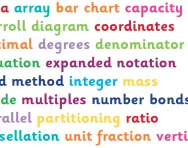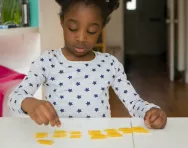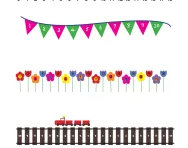Important update from TheSchoolRun
For the past 13 years, TheSchoolRun has been run by a small team of mums working from home, dedicated to providing quality educational resources to primary school parents. Unfortunately, rising supplier costs and falling revenue have made it impossible for us to continue operating, and we’ve had to make the difficult decision to close. The good news: We’ve arranged for another educational provider to take over many of our resources. These will be hosted on a new portal, where the content will be updated and expanded to support your child’s learning.
What this means for subscribers:
- Your subscription is still active, and for now, you can keep using the website as normal — just log in with your usual details to access all our articles and resources*.
- In a few months, all resources will move to the new portal. You’ll continue to have access there until your subscription ends. We’ll send you full details nearer the time.
- As a thank you for your support, we’ll also be sending you 16 primary school eBooks (worth £108.84) to download and keep.
A few changes to be aware of:
- The Learning Journey weekly email has ended, but your child’s plan will still be updated on your dashboard each Monday. Just log in to see the recommended worksheets.
- The 11+ weekly emails have now ended. We sent you all the remaining emails in the series at the end of March — please check your inbox (and spam folder) if you haven’t seen them. You can also follow the full programme here: 11+ Learning Journey.
If you have any questions, please contact us at [email protected]. Thank you for being part of our journey it’s been a privilege to support your family’s learning.
*If you need to reset your password, it will still work as usual. Please check your spam folder if the reset email doesn’t appear in your inbox.
How maths teaching has changed since we were at school
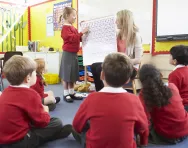
Many of us have only sketchy memories of how maths was taught when we were at school, but one thing is certain, and that’s that today’s methods are very different.
Processes have changed, as have expectations of what children will learn, and there’s a whole new mathematical vocabulary to get used to.
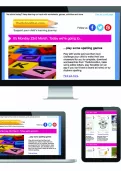
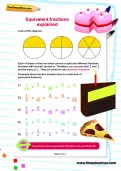
Boost your child's maths & English skills!
- Follow a weekly programme
- Maths & English resources
- Keeps your child's learning on track
We step inside today’s maths classroom to find out what’s different and how you can keep abreast of your child’s learning.
Times tables
In our day: We learnt times tables by rote until we were able to recite them from 1x1 to 12x12 almost without thinking.
Now: ‘Teaching times tables by rote is still a valid approach,’ says teacher Nick Yeldham who runs workshops for parents on understanding primary school maths (www.keystoneworkshops.co.uk). ‘But it’s also important that children learn the individual number facts as well.’
This means they need to learn times tables out of sequence, so they can – for example – solve 7x8 without having to recite the seven times table from the beginning.
They’re also encouraged to use their existing knowledge of number facts to identify further facts.
For example, if they know 2x, then can find 4x by doubling it.
‘You can drop in opportunities to practise this at home by asking them to solve quick-fire times table facts,’ Nick says.
Maths Mastery
In our day: Maths teaching in the early years focused on basic number work, often using props such as tens and units blocks.
Now: Maths Mastery – a new initiative based on how maths is taught in high-achieving South Asian countries – is being rolled out across primary schools.
‘It focuses on fluency, reasoning and problem-solving,’ Nick explains.
‘The idea is that we develop children’s core understanding then build in opportunities for investigation once they’ve mastered the basics.’
Children use objects and pictures (such as LEGO bricks or dots on a page) to physically represent the numbers they’re manipulating, and then once they’re secure in their knowledge, the props are removed.
This is known as the concrete > pictorial > abstract approach.
Progressive learning
In our day: We often worked from textbooks, moving from lesson to lesson in order with little regard for how well we’d grasped a concept.
Now: ‘There’s a very clear progression in maths teaching, with a careful build-up across the years, starting with the simplest methods and moving on to more complex operations like long division,’ Nick says.
For example, in Reception and Year 1, children use number lines and objects to represent numbers.
In Year 2, they begin to use empty number lines, and get to grips with counting on and counting back in Years 2, 3 and 4.
‘Once they’ve mastered these skills, they can begin to use more formal written procedures,’ Nick explains.
New terminology
In our day: The language around maths was fairly straightforward, and hadn’t changed much from when our own parents were at school.
Now: You’re likely to encounter a whole range of new terminology that – at first – will mean nothing to you, such as BODMAS, the grid method, the bus stop method, partitioning and chunking.
‘The best thing to do is talk to your child’s teacher about the terminology they use, as we all have our own slight variations,’ Nick advises.
‘The important thing is that you understand the language of maths so there’s consistency between home and school to maximise your child’s understanding.’
Word problems
In our day: Sums looked like sums, and calculations were usually written as numbers.
Now: Word problems have become a lot more widely used in the classroom, such as:
‘Longton’s Secondary School had a trip to Funsville Theme Park. 4/5 of the children went on the trip and the rest stayed in school. If 127 stayed in school, how many went on the trip?’
The idea is that children are able to break the problem down to find the numbers and calculations they need to use to get to an answer.
Couching calculations in word problems also helps children see how maths is applied in the real world.
Mental maths
In our day: We were expected to have a sound grasp of the four operations (add, subtract, multiply and divide) and be able to work out calculations in our head as well as on paper.
Now: Mental maths is perhaps even more important than it was in our own schooldays.
A firm knowledge of number bonds and multiplication and division facts are essential, especially as calculators are no longer allowed in Year 6 SATs.
‘We start with physical props in the classroom so children can visualise the numbers they’re working with, and this helps embed the knowledge so they can then solve problems mentally,’ says Nick.
‘We do still use calculators in class to check answers, but there’s no calculator paper in KS2 maths SATs.’
Technology
In our day: Calculators were about as sophisticated as it got in terms of technology in the maths classroom.
Now: There’s an endless supply of technological resources to help children master maths.
Teachers routinely demonstrate concepts using the interactive whiteboard, and many schools use websites and apps to set homework that will help children develop their maths skills.
There are also lots of great interactive resources that you can use at home, including TheSchoolRun’s new tutorials, to make maths learning fun for your child.
